Smithsonian Timeline
1
Aug 10, 1846 Smithsonian Act of Organization Passed
The U.S. Senate passes the act organizing the Smithsonian Institution, which President James K. Polk signs into law. Provisions of the Organic Act include a “suitable” building with rooms for the “reception and arrangement” of natural history objects, a library, and an art gallery. Other provisions state that all objects of art and natural history belonging to the United States should be transferred to and held within the Smithsonian. More - https://siarchives.si.edu/collections/siris_sic_650

2
Dec 03, 1846 Joseph Henry Elected First Smithsonian Secretary
The Smithsonian Board of Regents elects Professor Joseph Henry of the College of New Jersey (now Princeton University) as the first Secretary of the Smithsonian Institution, the Institution’s executive officer. Secretary Henry goes on to serve as Secretary for 32 years from 1846 until his death in 1878. At the time of his election, Secretary Henry was a well-known “natural philosopher” because of his discoveries in electromagnetism. More -https://siarchives.si.edu/collections/siris_sic_472.
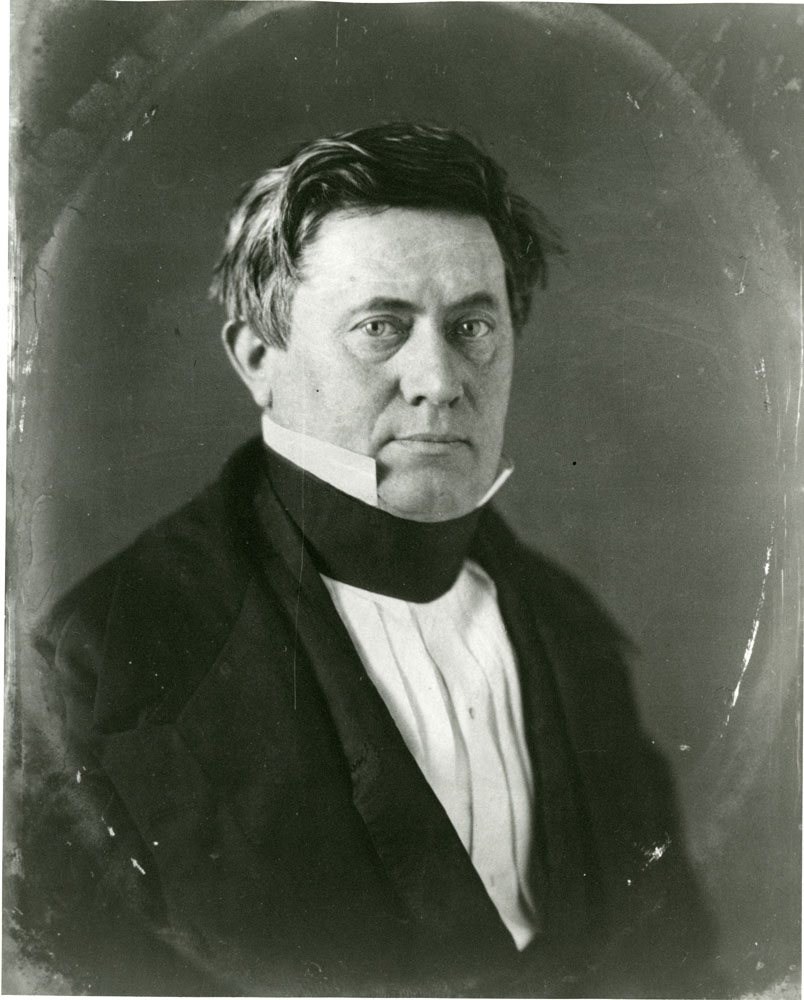
3
Feb 08, 1855 Smithsonian Building Completed
Work on the Smithsonian Institution’s main building, the “Castle,” is completed in the winter of 1855. The upper story of the East Wing is converted into a residence for Secretary Joseph Henry and his family. The final total spent on the building is $318,727.01. More - https://siarchives.si.edu/collections/siris_sic_34.

4
Jun 10, 1857 Smithsonian Designated as the National Museum
United States Attorney General Jeremiah S. Black rules that the Smithsonian is the National Museum of the United States and that it can receive federal appropriations to care for the National Collections. More - https://siarchives.si.edu/collections/siris_sic_12787.

5
Mar 03, 1875 Smithsonian Institution Exhibit at Centennial Exposition Funded
The United States Congress appropriates $67,000 to the Smithsonian to mount an exhibit at the Centennial Exposition in Philadelphia in 1876. Assistant Secretary George Brown Goode notes that one of the effects of the Exhibition is to make clear to U.S. citizens the educational importance of a great national museum. More - https://siarchives.si.edu/collections/siris_sic_653.

6
May 17, 1878 Spencer Baird Elected Second Secretary
Assistant Secretary Spencer Fullerton Baird is elected as the second Secretary of the Smithsonian after the death of the first Secretary, Joseph Henry, on May 13th. Baird was appointed Assistant Secretary in 1850 and was placed in charge of the National Museum of the United States. His term as Secretary lasts nine years, from 1878 until his death in 1887. More - https://siarchives.si.edu/collections/siris_sic_543.
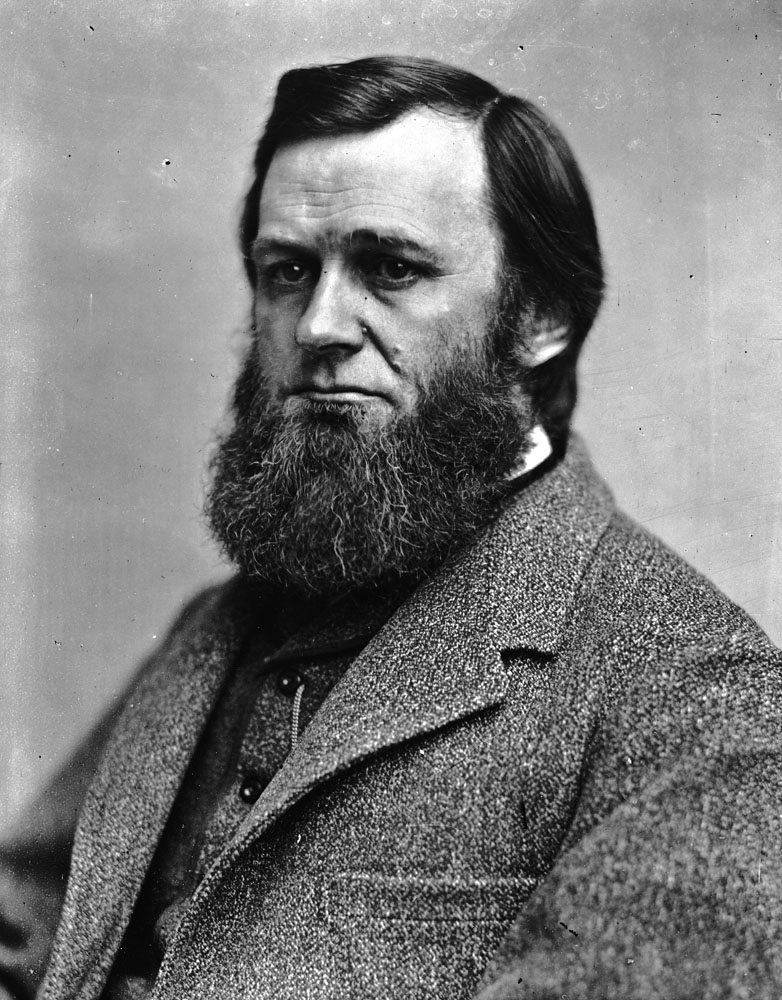
7
Mar 03, 1879 Bureau of Ethnology Established at Smithsonian by Congress
Congress appropriates $20,000 for the publication of contributions to North American Ethnology, and mandates that including archives, records, and materials relating to the Indians of North America collected by the geographical and geological survey of the Rocky Mountains be transferred to the the Bureau of Ethnology. On February 28th, the Secretary of the Interior requested that this appropriation be placed under the Smithsonian instead of the Department of the Interior. The Bureau of Ethnology, with Major John Wesley Powell as director, is established. More - https://siarchives.si.edu/collections/siris_sic_661.
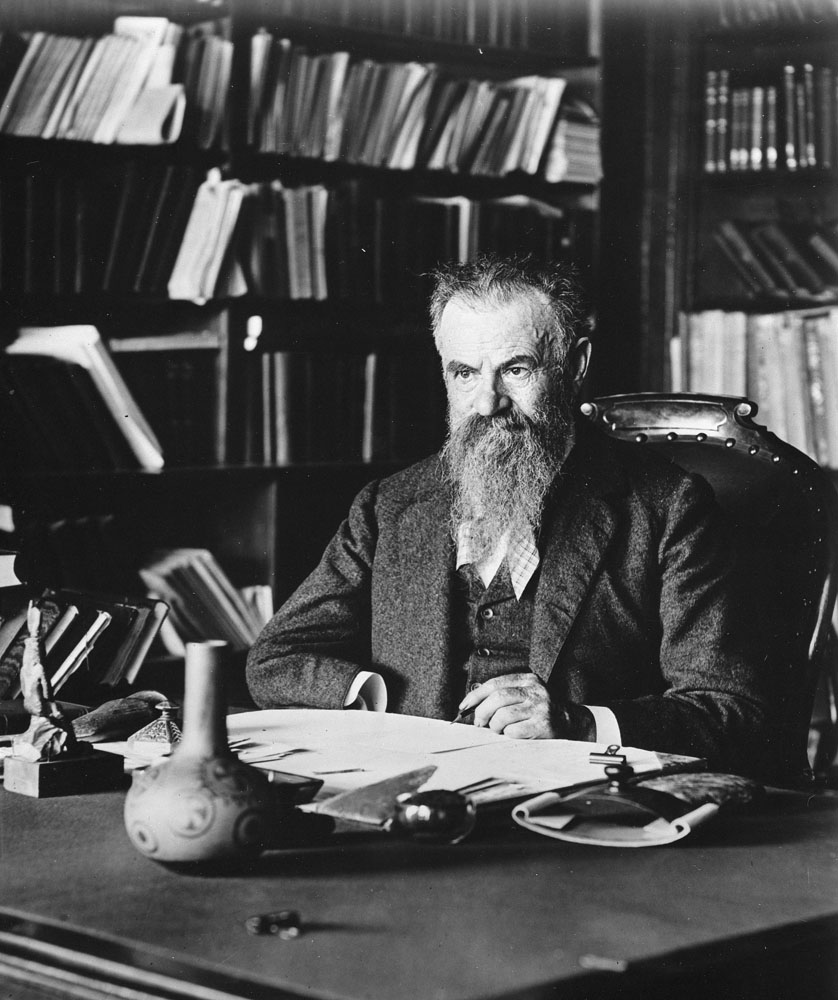
8
Mar 04, 1881 Arts and Industries Building Opened
The Arts and Industries Building (then known as the National Museum Building) opens with its first major event, the Inaugural Ball of President James Garfield. This is the first building built to be the National Museum of the United States. More - https://siarchives.si.edu/history/arts-and-industries-building.
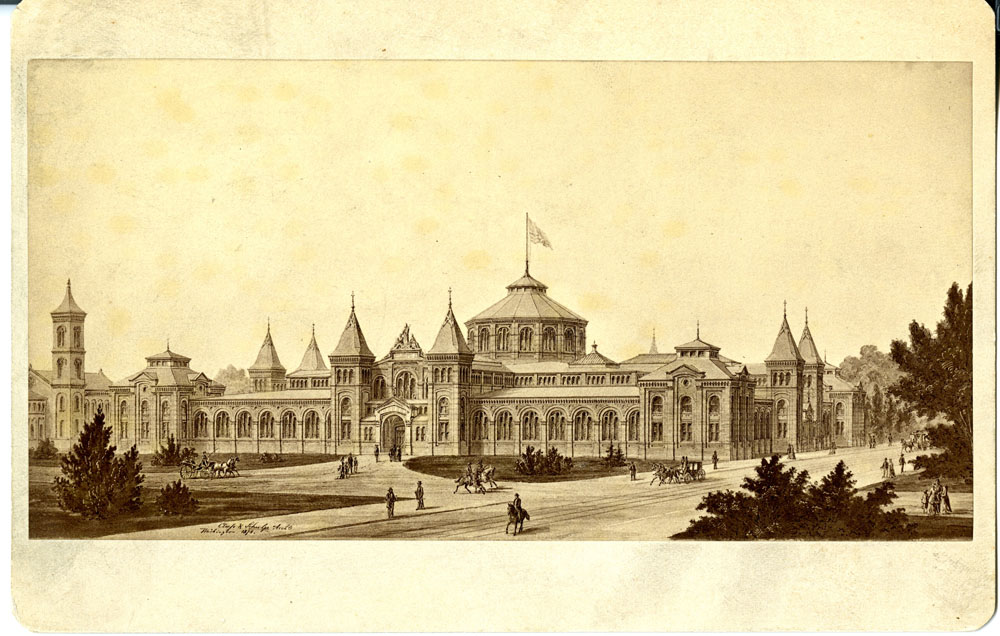
9
Nov 18, 1887 Samuel Langley Elected Third Secretary
Astrophysicist Samuel P. Langley is elected the third Secretary of the Smithsonian Institution at a special meeting of the Board of Regents. His term lasts 19 years, until his death in 1906. Prior to his appointment, Langley was the Assistant Secretary in charge of exchanges, publications, and the library. More - https://siarchives.si.edu/collections/siris_sic_560.
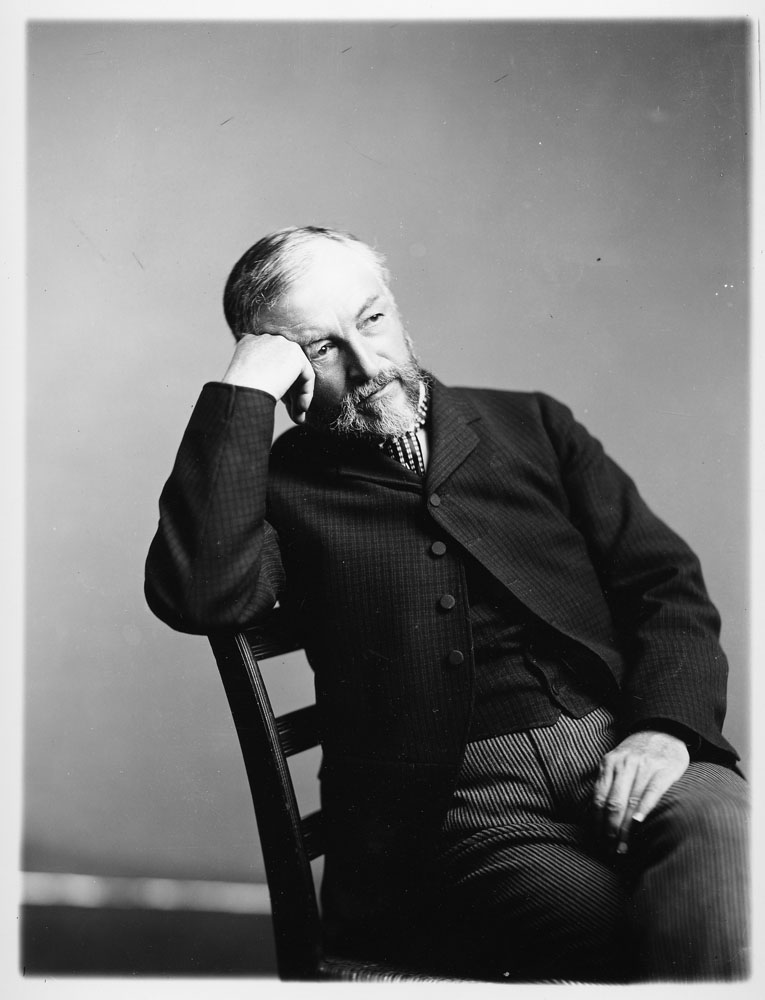
10
Mar 01, 1890 Astrophysical Observatory Established
The Astrophysical Observatory is established in a wooden edifice built at the cost of the Smithsonian on the grounds south of the Smithsonian Institution Building. It is one of the earliest observatories to practice the "new astronomy," or astrophysics. SAO focuses its research on the study of solar radiation and the solar constant—the amount of energy from the sun that strikes the outer edge of the earth's atmosphere. More - https://siarchives.si.edu/collections/siris_sic_566.
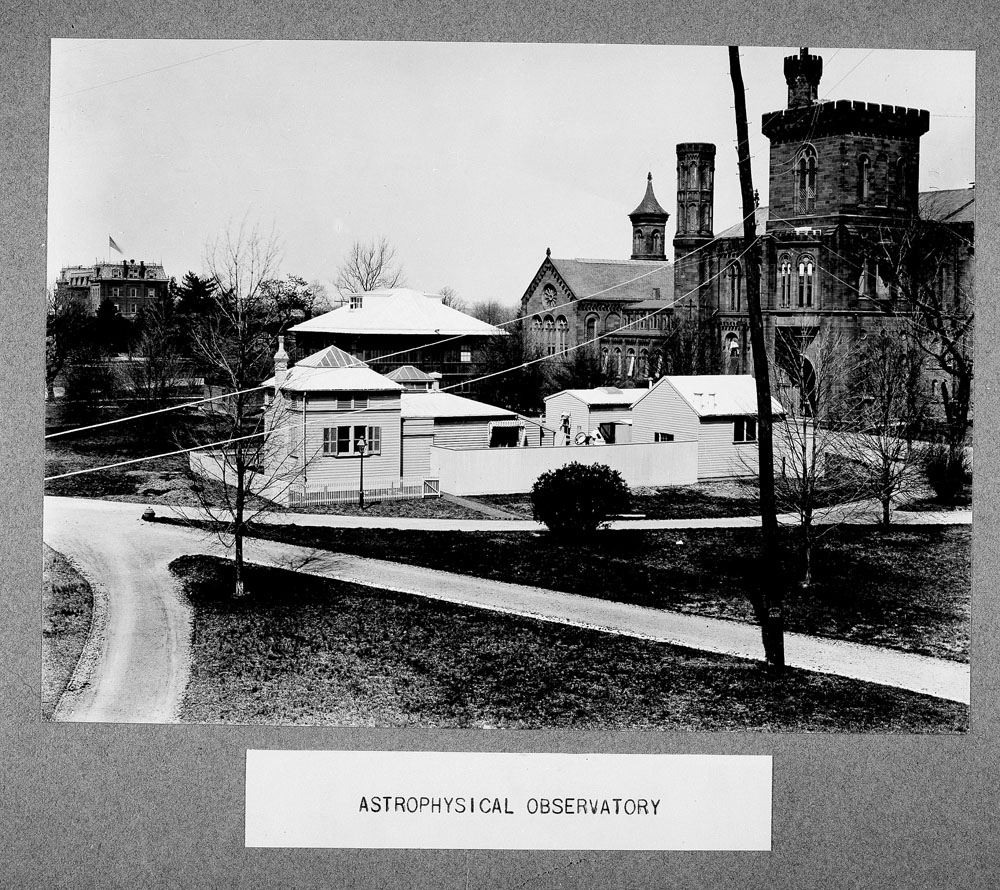
11
Apr 30, 1891 National Zoological Park Opened in the Valley of Rock Creek
The National Zoological Park officially opens to the public in the valley of Rock Creek, dedicated to education, conservation, and recreation. More - https://siarchives.si.edu/collections/siris_sic_138.

12
Jan 23, 1907 Charles D. Walcott Elected Fourth Secretary
Charles Doolittle Walcott is elected the fourth Secretary of the Smithsonian Institution. He serves a twenty-year term from 1907 to 1927. Before his election, Walcott was a well-known geologist and explorer who had previously succeeded Major John Wesley Powell as director of the U.S. Geological Survey. More - https://siarchives.si.edu/collections/siris_sic_190.

13
Mar 17, 1910 Natural History Building Opened
Although not yet completed, the United States National Museum Building (now the National Museum of Natural History) is opened to the public. More - https://siarchives.si.edu/collections/siris_sic_690.

14
Mar 11, 1912 Helen Herron Taft Donated First of the “First Ladies Gowns”
On this day, Mrs. William Howard Taft presents her inaugural gown to the Smithsonian Institution, beginning this popular collection. Subsequently, former first ladies or their descendants are approached and a collection of dresses from each first lady is acquired. More - https://siarchives.si.edu/collections/siris_sic_371.

15
May 02, 1923 Freer Gallery of Art Opened
The Freer Gallery of Art opens to the public. For the opening week, the Smithsonian issues 3,300 invitations and 32,648 people visit between May 9 and June 30. Built to house the extensive private Asian art collection of millionaire Charles Lang Freer, the museum is the first at the Smithsonian dedicated exclusively to fine arts collections. More - https://siarchives.si.edu/collections/siris_sic_231.
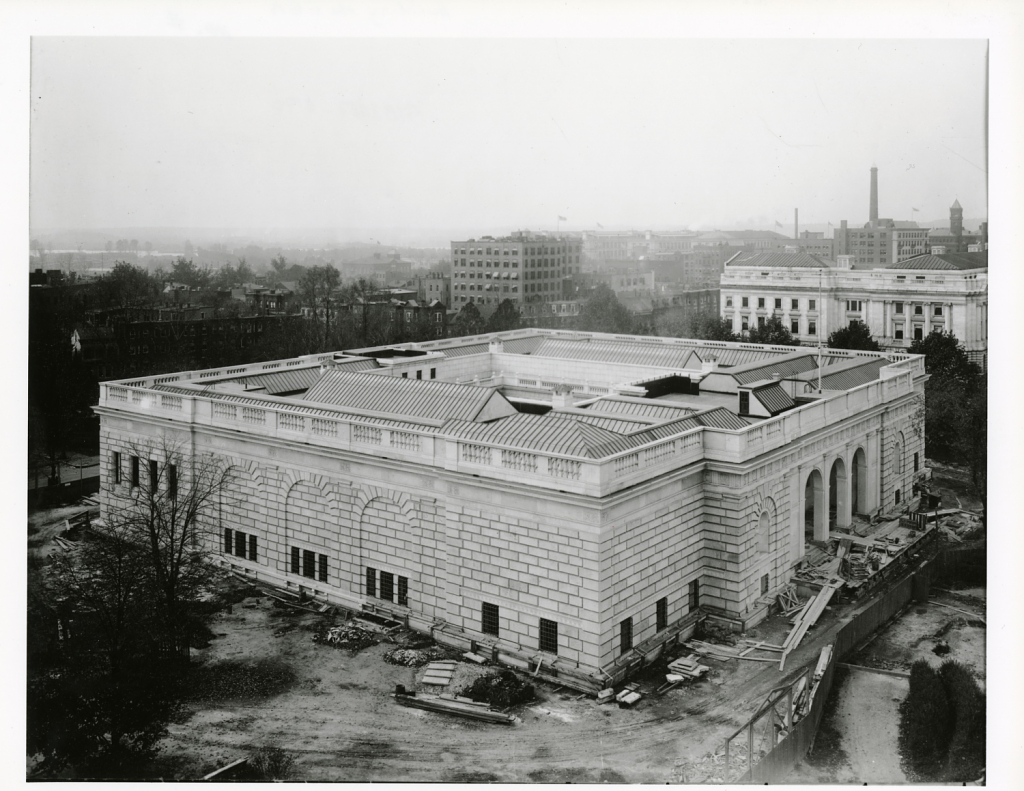
16
Jan 10, 1928 Charles G. Abbot Elected Fifth Secretary
Charles Greeley Abbot is elected the fifth Secretary of the Smithsonian Institution by the Board of Regents. He serves a sixteen-year term, from 1928 to 1944, through the Great Depression and World War II. He first came to the Institution in 1895 as an aid at the Smithsonian Astrophysical Observatory after receiving his master's degree from the Massachusetts Institute of Technology. More - https://siarchives.si.edu/collections/siris_sic_701.

17
Apr 30, 1928 “Spirit of St. Louis” Donated to SI by Charles Lindbergh
Charles A. Lindbergh donates the airplane to the Smithsonian on April 30, 1928 and the "Spirit of St. Louis" first goes on display in the Arts and Industries Building on May 13, 1928. Lindbergh flies the "Spirit of St. Louis" into Bolling Field on April 30th. It is later dismantled, transported to the Smithsonian, reassembled, and placed on display. More - https://siarchives.si.edu/collections/siris_sic_9877.
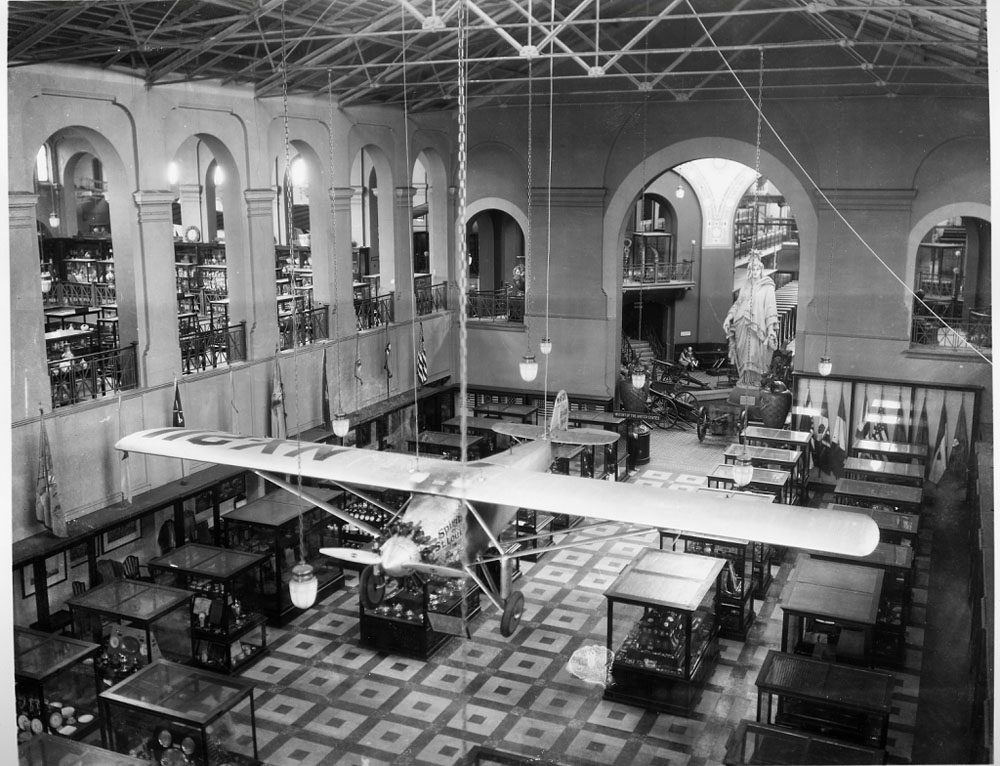
18
Jan 12, 1945 Alexander Wetmore Elected Sixth Secretary
The Smithsonian Board of Regents elects Alexander Wetmore the sixth Secretary of the Smithsonian Institution on January 12, 1945. A noted ornithologist, he had been associated with the Institution since 1924, when he served for a short time as superintendent of the National Zoological Park. Wetmore serves a seven-year term as Secretary, from January 12, 1945 to December 31, 1952. More - https://siarchives.si.edu/collections/siris_sic_732.

19
Jul 16, 1945 Canal Zone Biological Area Became Part of SI
The Canal Zone Biological Area (CZBA) in Panama is put under Smithsonian Institution administration by President Harry S. Truman. The tropical research station, located on Barro Colorado Island, had been set aside by the U.S. Congress in 1940. The CZBA is later renamed the Smithsonian Tropical Research Institute (STRI). More - https://siarchives.si.edu/collections/siris_sic_736.

20
Aug 12, 1946 National Air Museum Established
President Harry S. Truman signs the Act establishing the National Air Museum (P.L. 722). The Act directs that, “the new museum shall memorialize the national development of aviation; collect, preserve, and display aeronautical equipment of historical interest and significance; serve as a repository for scientific equipment and data pertaining to the development of aviation; and, provide educational material for the historical study of aviation.” The Museum is housed in a Quonset hut dating from World War I. More - https://siarchives.si.edu/collections/siris_sic_739.

21
Jun 01, 1950 Smokey Bear Arrived at the National Zoo
Smokey Bear, a four-month-old orphaned black bear cub rescued from a forest fire in Lincoln National Forest in New Mexico, arrives at the National Zoological Park. The National Park Service erects an exhibit next to Smokey's cage, and the bear becomes a famous symbol of fire prevention. More - https://siarchives.si.edu/collections/siris_sic_1084.
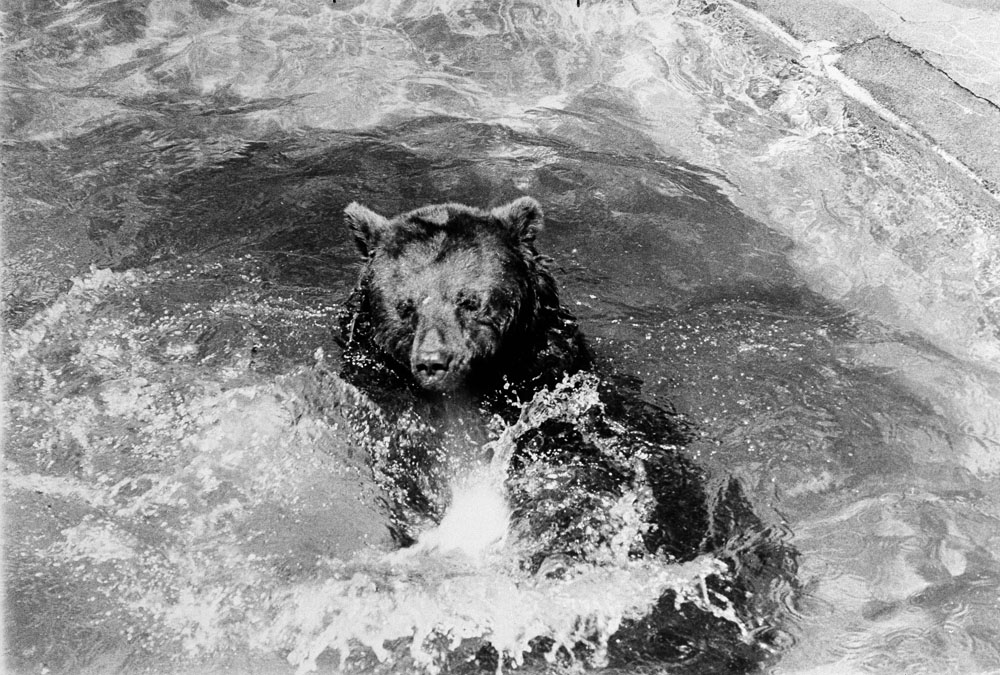
22
Jan 01, 1952 Smithsonian Institution Traveling Exhibition Service Established
During fiscal year 1952, under the direction of Annemarie H. Pope, the National Collection of Fine Arts inaugurates the Smithsonian Institution Traveling Exhibition Service. Initially, it is financed by the Alice Pike Barney Fund and a grant from the State Department. More - https://siarchives.si.edu/collections/siris_sic_753.

23
Apr 09, 1952 Leonard Carmichael Elected Seventh Secretary
Leonard B. Carmichael is elected the seventh Secretary of the Smithsonian by the Board of Regents on April 9, 1952. He serves an eleven-year term from 1953 to 1964. He is the first Secretary selected from outside the Institution. For fourteen years prior to his appointment, he was president of Tufts College. More - https://siarchives.si.edu/collections/siris_sic_766.

24
Nov 10, 1958 Hope Diamond Donated to Smithsonian
The Hope Diamond is formally donated to the Smithsonian by Harry Winston, a New York gem merchant. The stone was acquired by Winston in 1949 from the estate of Mrs. Evalyn Walsh McLean, who received it from her husband, Edward B. McLean, in 1911. The diamond's known history dates to 1830 when David Eliason, a noted gem dealer, sold the stone to Henry Thomas Hope. More - https://siarchives.si.edu/collections/siris_sic_1089.

25
Mar 06, 1959 Fénykövi Elephant Placed on Display in NMNH
Dignitaries and invited guests gather in the Rotunda of the United States National Museum's Natural History Building, now the National Museum of Natural History, to view the unveiling of the Fénykövi elephant. Donated by José Fénykövi, the elephant is the largest land mammal in the world on display at the time of its unveiling. More - https://siarchives.si.edu/collections/siris_sic_12311.

26
Jan 23, 1964 National Museum of American History Opened
The (National) Museum of History and Technology opens in its new building, occupying the equivalent of ten exhibition halls. In the first weekend, 54,000 people visited the Museum, which is now known as the National Museum of American History. The halls included the Flag Hall, First Ladies' Hall, the halls of Everyday Life in the American Past, American Costume, Farm Machinery, Light Machinery, Tools, Vehicles, Railroads, as well as a temporary exhibition presenting examples of exhibits to be installed in other halls of the building. More - https://siarchives.si.edu/collections/siris_sic_1090.
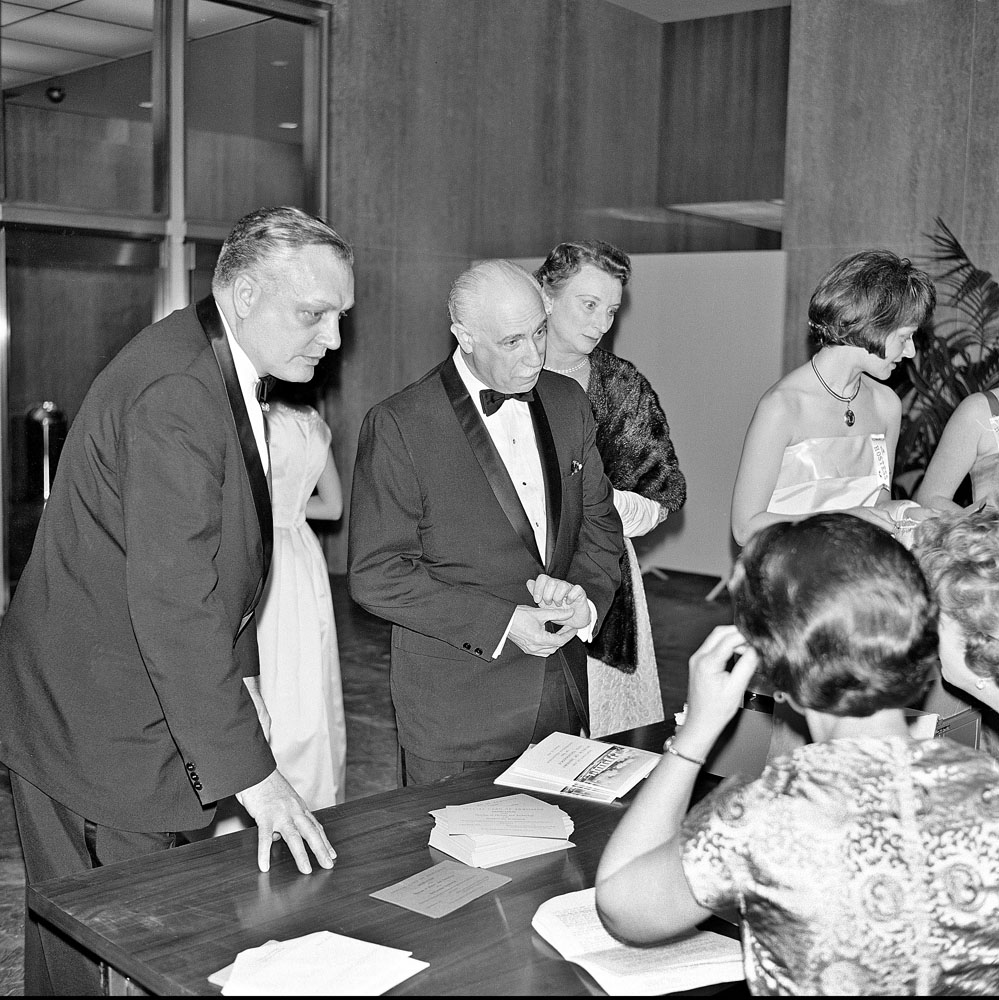
27
Feb 01, 1964 S. Dillon Ripley Became Eighth Secretary
S. Dillon Ripley took office as the eighth Secretary of the Smithsonian. Before becoming Secretary, Ripley was a professor of biology at Yale University, and director of its Peabody Museum of Natural History. He was trained as a biologist with a particular interest in ornithology. The seventh Secretary, Leonard Carmichael, who had served from 1953 to 1964, retired on January 31, 1964. More - https://siarchives.si.edu/collections/siris_sic_855.

28
Sep 18, 1965 The Smithsonian Associates Created
The creation of the Smithsonian Society of Associates is announced during the celebration of the 200th anniversary of the birth of James Smithson. It is designed especially for residents of the Washington, DC metropolitan area. The program, the name of which will later be shortened to “Smithsonian Associates,” offers its members a wide range of educational and cultural activities, including classes in the arts, sciences, humanities, and crafts, as well as tours and opportunities for domestic travel. More - https://siarchives.si.edu/collections/siris_sic_1091.

29
Jul 01, 1965 Smithsonian Environmental Research Center Established
The Chesapeake Bay Center for Field Biology (CBCFB) is created as a division of the National Museum of Natural History (NMNH). The center on 700 acres of land is located seven miles south of Annapolis, Maryland. In 1983, it merges with the Radiation Biology Laboratory and is renamed the Smithsonian Environmental Research Center. More - https://siarchives.si.edu/collections/siris_sic_862.

30
Jan 01, 1966 Conservation Analytical Laboratory Established
The Conservation Analytical Laboratory, now the Museum Conservation Institute, is established to support museum curators in authenticity studies and the preservation of artifacts. The Laboratory specializes in two scientific pursuits: conservation science, which analyzes objects and their materials to determine suitable conservation treatment; and archaeometry, which aims to integrate scientific analysis of objects with their anthropological, archaeological, art historical, and cultural backgrounds. More - https://siarchives.si.edu/collections/siris_sic_898.
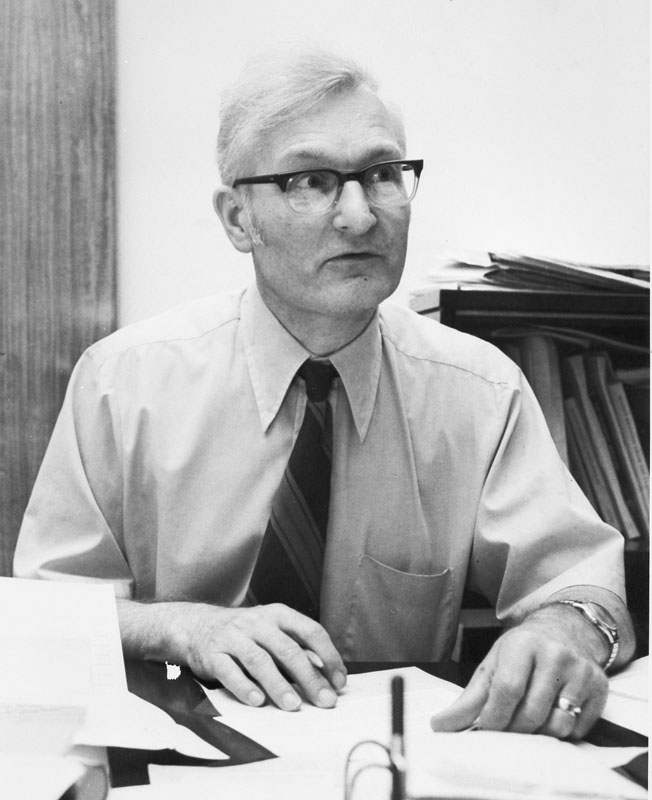
31
Jul 01, 1967 First Festival of American Folklife Held on the National Mall
The first Festival of American Folklife is held on the National Mall from July 1 - 4, 1967. The festivals are intended to present American and foreign craftsmen and musicians and dancers. Some of the first festival features include basket weavers, pottery, makers, woodworkers, carvers, doll makers, needleworkers, tale tellers, boat builders, and folk singers, dancers, and musicians. More - https://siarchives.si.edu/collections/siris_sic_1094.
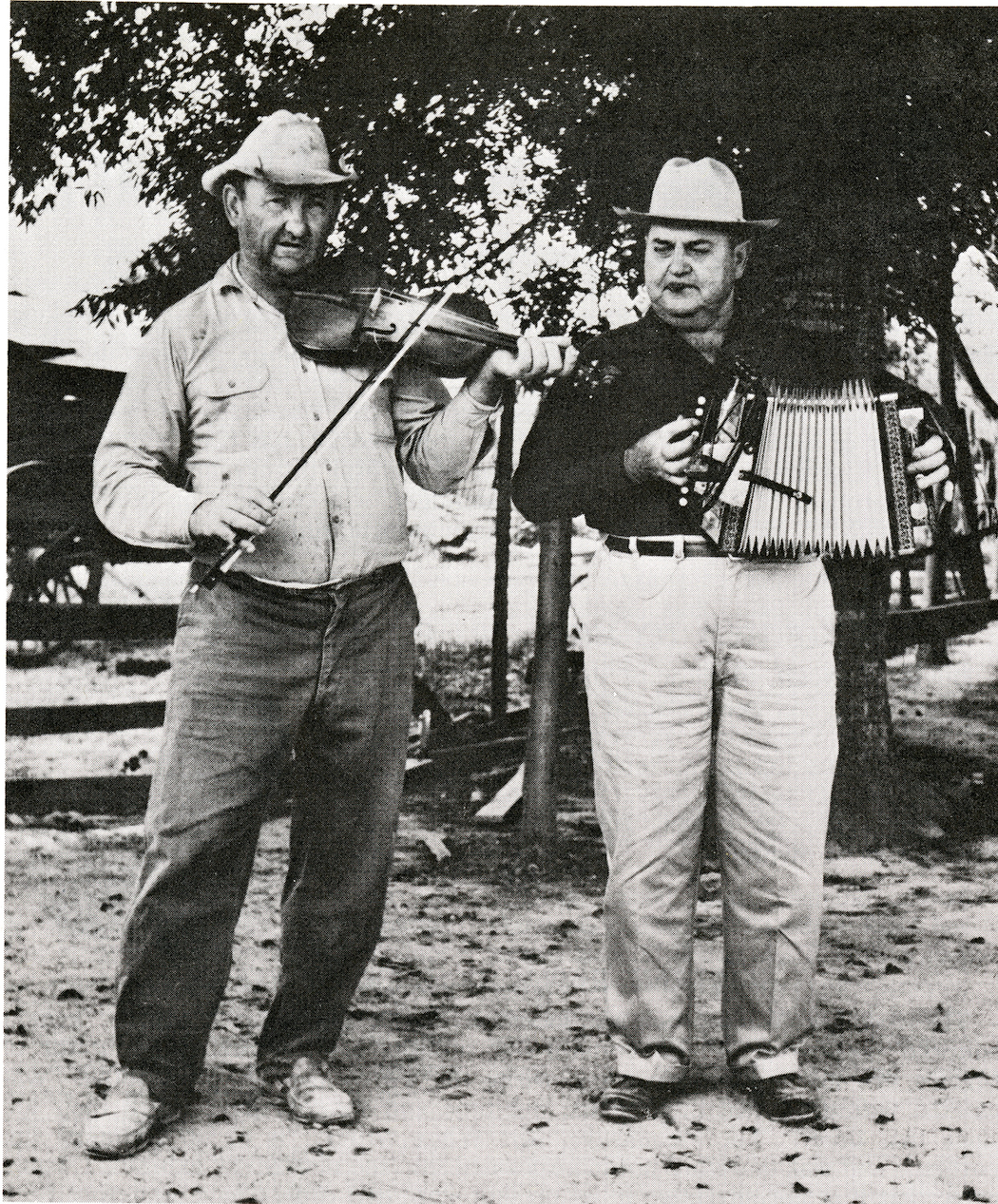
32
Sep 15, 1967 Anacostia Museum Opened
The Anacostia Neighborhood Museum opened in Anacostia, a primarily African American neighborhood in southeast Washington. This museum, an "experimental community museum," located in a renovated theater, is operated in cooperation with the local community. Its first six exhibits included: a Mercury space capsule; a reproduction of an 1890 Anacostia store; a little theater; shoebox collections on natural-science subjects; skeletons that could be disassembled; and a small zoo. More - https://siarchives.si.edu/collections/siris_sic_1095.

33
May 03, 1968 National Museum of American Art Opened in Old Patent Office Building
The National Collection of Fine Arts, now the Smithsonian American Art Museum, is dedicated in its new building. The NCFA moved out of the Natural History Building and into the Old Patent Office Building after it was vacated by the Civil Service Commission. At the dedication, President and Mrs. Lyndon B. Johnson are escorted through the galleries by Secretary and Mrs. S. Dillon Ripley. The public opening takes place on May 6. More - https://siarchives.si.edu/collections/siris_sic_894.
![Dedication ceremony for the opening of the National Collection of Fine Arts, now known as the Smithsonian American Art Museum with U.S. President Lyndon B. Johnson, Lady Bird Johnson, and Secretary S. Dillon Ripley. SIA Acc. 11-008 [OPA-1249].](https://siarchives.si.edu/sites/default/files/American%20Art%20Museum%20Dedicated.jpg)
34
Oct 05, 1968 National Portrait Gallery Opened in Old Patent Office Building
Opening ceremonies are held at the National Portrait Gallery. It collects and displays paintings, sculptures, graphics, and photographs of men and women who have made significant contributions to the history, development, and culture of the United States. It is located in the former Patent Office Building, newly named the Fine Arts and Portraits Galleries, which it shares with the National Collection of Fine Arts, now the Smithsonian American Art Museum. More - https://siarchives.si.edu/collections/siris_sic_895.

35
Apr 01, 1970 Smithsonian Magazine Began Publication
The Smithsonian magazine, initially available only to National and Resident Associates, was launched. Edward K. Thompson, formerly editor of Life magazine, was the founding editor. More - https://siarchives.si.edu/collections/siris_sic_911.

36
May 01, 1970 Archives of American Art Became Part of Smithsonian
The Archives of American Art formally joins the Smithsonian as a bureau. Regional branch offices are located in New York, Detroit, San Francisco, and Washington, and field offices are located in Boston and Santa Fe. The Archives was founded in 1954 in Detroit as an independent research institution committed to collecting art history documentation to encourage scholarship in the visual arts in this country from the 18th century to the present time. More - https://siarchives.si.edu/collections/siris_sic_1097.
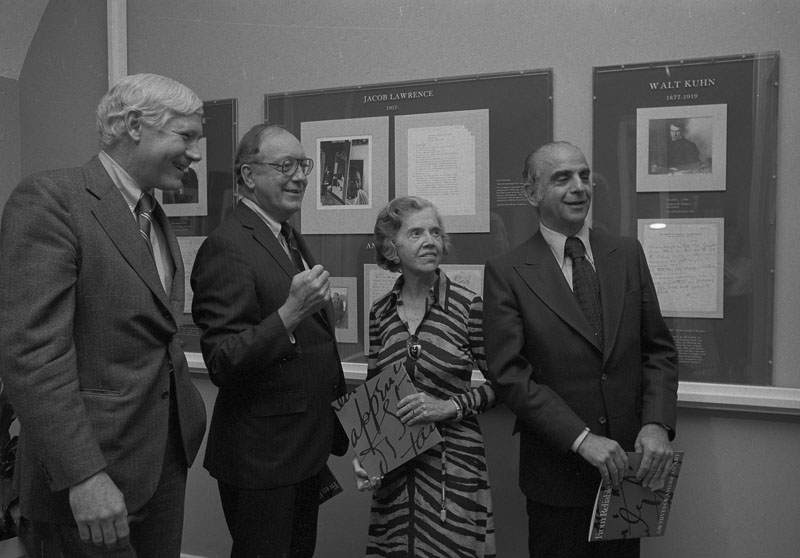
37
Oct 16, 1971 Smithsonian Marine Station at Fort Pierce Established
The Fort Pierce Bureau, a marine research facility in Florida, is established. It is created as a separate bureau under the Assistant Secretary for Science. In 1998, the facility became known as the Smithsonian Institution Marine Station at Fort Pierce, and is administered by the National Museum of Natural History. More - https://siarchives.si.edu/collections/siris_sic_1098.
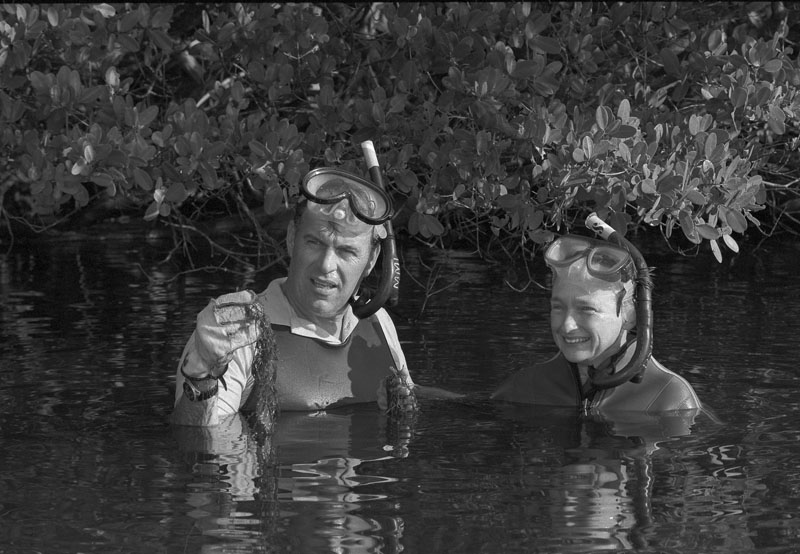
38
Jan 27, 1972 Renwick Gallery Opened
The Renwick Gallery opened in the former Corcoran Gallery of Art Building next to Blair House, designed by James Renwick, Jr. Administered by the Smithsonian American Art Museum, the gallery is devoted to American creativity in crafts, design, and decorative arts. More - https://siarchives.si.edu/collections/siris_sic_924.

39
Apr 16, 1972 Giant Pandas Arrived at National Zoo
The two Giant Pandas, Hsing-Hsing and Ling-Ling, arrived at Andrews Air Force Base at 5 a.m. and were transported to the National Zoological Park. A month before on March 13th, President Richard Nixon announced that the pandas would reside at the National Zoo, and called them a "gift from all the people of China to all the people of the United States." On April 20, the pandas were officially presented, with Mrs. Nixon and members of Congress in attendance. With a rate of approximately 1,200 people per hour, nearly 24,000 visitors came to see Hsing-Hsing and Ling-Ling on their first weekend. More - https://siarchives.si.edu/collections/siris_sic_1003.
![Giant pandas Hsing-Hsing and Ling-Ling arrive in cages at National Zoo. SIA Acc. 11-009 [72-4674-13].](https://siarchives.si.edu/sites/default/files/Giant%20Pandas%20Arrive%20at%20National%20Zoo.jpg)
40
Oct 04, 1974 Hirshhorn Museum and Sculpture Garden Opened
The Hirshhorn Museum and Sculpture Garden opened to the public. It is the Smithsonian's museum for modern and contemporary art and is also known particularly for its extensive sculpture collection. The inaugural exhibition represented highlights from the permanent collection and includes 900 works in all media, some of which had never before been exhibited. More - https://siarchives.si.edu/collections/siris_sic_1101.

41
Jun 22, 1975 Smithsonian Conservation Biology Institute Established
The National Zoological Park's Conservation and Research Center, now known as the Smithsonian Conservation Biology Institute, is established on 3,100 acres at Front Royal, Virginia, to encourage development of all aspects of animal sciences. It trains wildlife biologists from developing countries, and breeds, houses, and conducts research on a range of endangered species. More - https://siarchives.si.edu/collections/siris_sic_941.

42
Jul 01, 1976 National Air & Space Museum Opened
The National Air and Space Museum opens on the Mall. The ribbon-cutting is accomplished by an electrical impulse that originated in the Viking spacecraft then nearing Mars, burning the ribbon. The building was designed with a modern open design to accommodate the large aircraft and rockets. More - https://siarchives.si.edu/collections/siris_sic_1107.
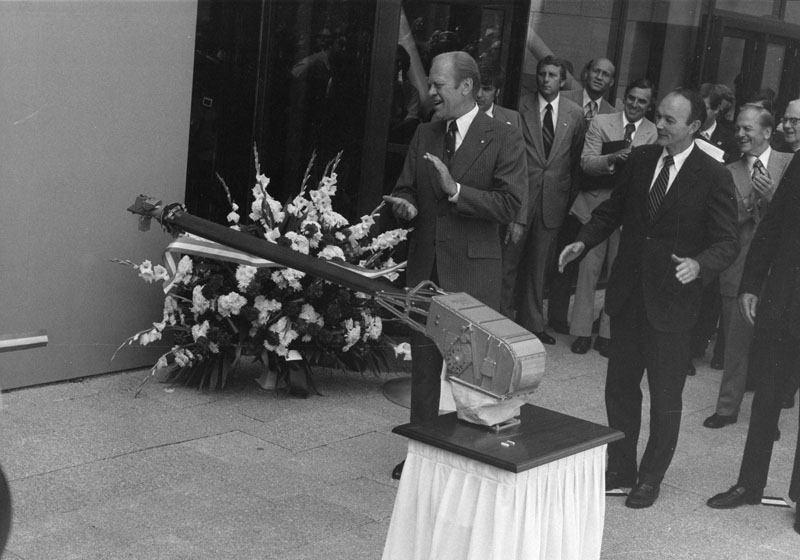
43
Oct 07, 1976 Cooper‑Hewitt: The National Design Museum Reopened
The Cooper-Hewitt Museum of Design and Decorative Arts reopens to the public in New York City with the inaugural exhibition "MAN transFORMS, Aspects of Design." The museum houses one of the world's leading collections of decorative art items, including textiles, glass, ceramics, furniture, and wallpaper. The director, Lisa Taylor, is the first woman to direct a Smithsonian museum. More - https://siarchives.si.edu/collections/siris_sic_1111.

44
Aug 13, 1979 Museum of African Art Moved to the Smithsonian
The Museum of African Art, established in 1964 as a private museum at the initiative of Warren Robbins, becomes a bureau of the Smithsonian. In the next year, it is renamed the National Museum of African Art. More - https://siarchives.si.edu/collections/siris_sic_1475.

45
Jan 21, 1984 Robert McC. Adams Named Ninth Secretary
Robert McCormick Adams is named the ninth Secretary of the Smithsonian by the Board of Regents and assumes the post on September 17, 1984, after a ceremony on the National Mall where he is given the key to the Castle. Adams served as Provost of the University of Chicago from 1982 until 1984. Adams serves a ten year term as Secretary from 1984 to 1994. More - https://siarchives.si.edu/collections/siris_sic_1750.

46
Sep 28, 1987 Arthur M. Sackler Gallery Opened
The Smithsonian's underground museum, research, and education complex opened. It includes the Arthur M. Sackler Gallery. In 1982, Dr. Arthur M. Sackler of New York donated $4 million and 1,000 masterpieces of Asian art from his collection valued in excess of $50 million to the new Smithsonian Center for African, Near Eastern, and Asian Cultures and the museum is named the Arthur M. Sackler Gallery. More - https://siarchives.si.edu/collections/siris_sic_1527.

47
Sep 28, 1987 S. Dillon Ripley International Center Opened
The Smithsonian's underground museum, research, and education complex opened, housing the S. Dillon Ripley Center, home to the Smithsonian Institution Traveling Exhibition Service, the International Center, and the National and Resident Associate Programs. More - https://siarchives.si.edu/collections/siris_sic_1765.

48
May 08, 1989 National Museum of the American Indian Established
The Smithsonian Institution and the Heye Foundation signed a transfer agreement for the Museum of the American Indian, Heye Foundation collections of more than one million objects from the native peoples of North, Central, and South America. More - https://siarchives.si.edu/collections/siris_sic_1566.

49
Jul 30, 1993 National Postal Museum Opened
The National Postal Museum opened to the public July 30, 1993. The museum houses and displays the national philatelic and postal history collection which is the largest and most comprehensive of its kind in the world. The museum has five exhibit galleries, a Discovery Center, and a Library Research Center. More - https://siarchives.si.edu/collections/siris_sic_2239 and https://siarchives.si.edu/collections/siris_sic_1576.

50
Sep 19, 1994 I. Michael Heyman Installed as Tenth Secretary
Ira Michael Heyman is installed to succeed Robert McC. Adams as Secretary of the Smithsonian Institution in September 1994. The election is the first time in Smithsonian history that a non-scientist is tapped to head the Institution. More - https://siarchives.si.edu/collections/siris_sic_1613.
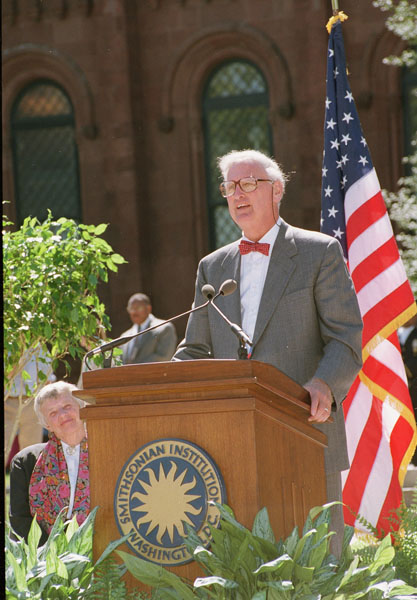
51
Sep 13, 1999 Lawrence M. Small Elected Eleventh Secretary
Lawrence M. Small is elected the 11th Secretary of the Smithsonian by the Board of Regents to succeed the retiring I. Michael Heyman. More - https://siarchives.si.edu/collections/siris_sic_2323.

52
Dec 15, 2003 Udvar-Hazy Center of NASM Opened
The Steven F. Udvar Hazy Center of the National Air and Space Museum opened to the public. The center complements the NASM in Washington, D.C., and provides enough space for the Smithsonian to display the thousands of aviation and space artifacts that cannot be exhibited on the National Mall. The two sites together showcase the largest collection of aviation and space artifacts in the world. More - https://siarchives.si.edu/collections/siris_sic_11829.

53
Sep 21, 2004 National Museum of the American Indian Opened
The Smithsonian's National Museum of the American Indian opened on the National Mall. It is the first national museum in the United States dedicated exclusively to Native Americans, the first to present all exhibitions from a Native American viewpoint, and the first constructed on the Mall since 1987. More - https://siarchives.si.edu/collections/siris_sic_11466.

54
Mar 24, 2007 Cristián Samper Appointed Acting Secretary
Dr. Cristián Samper, director of the National Museum of Natural History, is named Acting Secretary after the resignation of Secretary Larry Small. During his time as Acting Secretary, Dr. Samper expands funding for research and begins planning for use of the Arts and Industries Building. More - https://siarchives.si.edu/collections/siris_sic_11733.
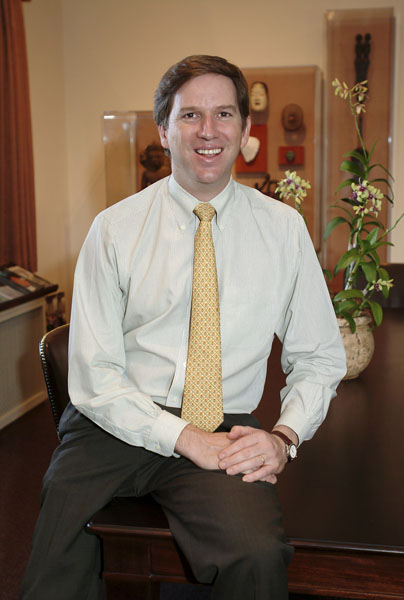
55
Mar 14, 2008 G. Wayne Clough Elected Twelfth Secretary
The Board of Regents of the Smithsonian Institution elects G. Wayne Clough, President of the Georgia Institute of Technology, as the twelfth Secretary of the Smithsonian Institution. During his tenure, he launches a capital campaign, formulates a new strategic plan, and initiates planning for a Smithsonian presence in England. More - https://siarchives.si.edu/collections/siris_sic_11822.
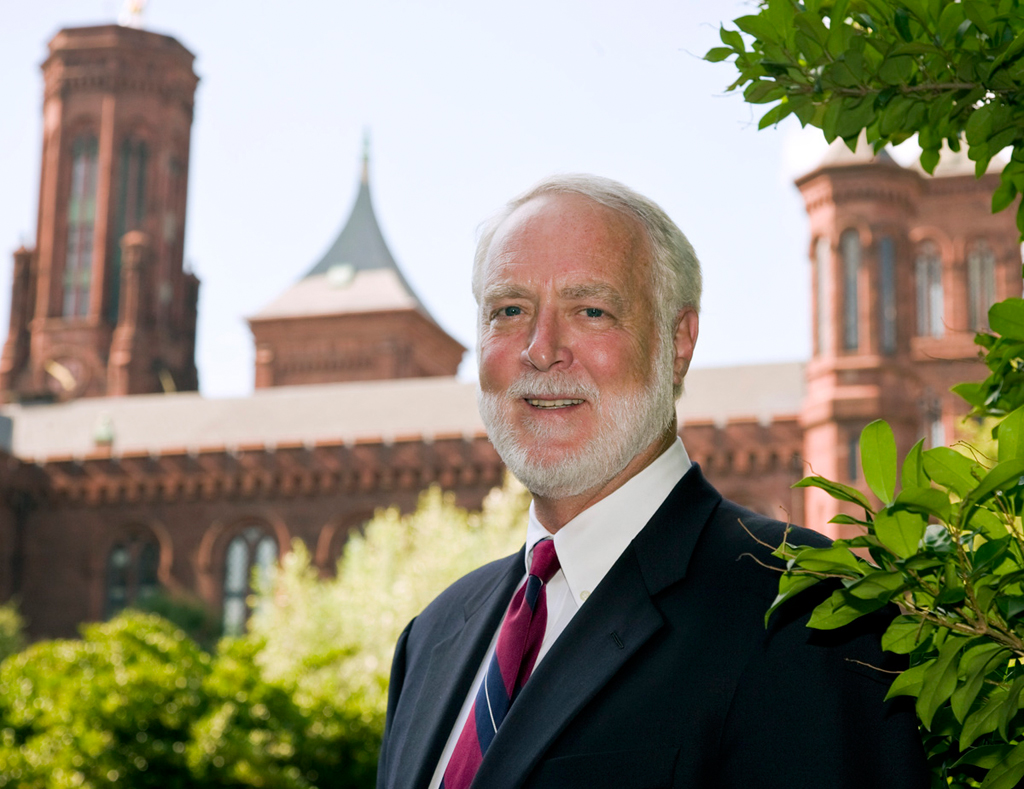
56
Oct 01, 2011 Smithsonian Reached Over 6,000 Volunteers
For Fiscal Year 2011, the Smithsonian's 6,637 volunteers account for 616,047 hours of service to the Institution. Volunteers conduct research, work behind-the-scenes with staff and collections, serve as docents, staff public programs, work as citizen scientists, and assist with seasonal programs such as the Folklife Festival and Summer Camp. More - https://siarchives.si.edu/collections/siris_sic_13434.
57
Mar 10, 2014 David Skorton Named Thirteenth Secretary
On March 10, 2014, the Smithsonian's Board of Regents named Dr. David J. Skorton, president of Cornell University, as the 13th Secretary of the Smithsonian Institution. A medical doctor, Secretary Skorton assumes his tenure as Secretary in July 2015, and emphasizes employee health as one of his priorities. More - https://siarchives.si.edu/collections/siris_sic_14153.

58
Sep 24, 2016 National Museum of African American History and Culture Opened
The National Museum of African American History and Culture is opened by President Barack Obama during a three day festival on the National Mall. It is the only national museum devoted exclusively to the documentation of African American life, history, and culture. More - https://siarchives.si.edu/collections/siris_sic_14710.

59
Nov 01, 2019 Lonnie Bunch Installed as 14th Secretary
Lonnie G. Bunch III was installed as the fourteenth Secretary of the Smithsonian Institution on November 1, 2019 at 3:00 p.m. in the Arts and Industries Building. Hon. John G. Roberts, Jr., Chief Justice of the United States and Chancellor of the Smithsonian, presided over the ceremony. Bunch is the first African American leader in the institution's 173-year history. Bunch is also the first historian to take the position. The ceremony began with a Presentation of the Colors by the Smithsonian Honor Guard and the singing of the National Anthem by singer, songwriter and Washington, D.C., native Kenny Lattimore. Welcoming remarks were made by David Rubenstein, chair of the Smithsonian Board of Regents and Steve Case, chair-elect. Eleanor Harvey, senior curator at the Smithsonian American Art Museum, welcomed the Secretary on behalf of the Smithsonian's staff and volunteers. Next came remarks from former Smithsonian Secretary David Skorton, who retired from the position in June. After delivering brief remarks, Chief Justice John G. Roberts, Jr,. presented Bunch with the ceremonial key to the Smithsonian Castle, a symbol of the Office of the Secretary of the Smithsonian. Bunch's 15-minute installation address followed the presentation. In his remarks, he told the story of a trip his family took in the 1960s from their home in New Jersey to visit relatives in the still-segregated South. "On the return, my family pulled into Washington and parked in front of the Smithsonian," Bunch said. "Then my dad explained that I could visit the Smithsonian and not worry about being turned away because of race." Regent Risa Lavizzo-Mourey closed the ceremony followed by Kenny Lattimore performing the Black National Anthem "Lift Every Voice and Sing."
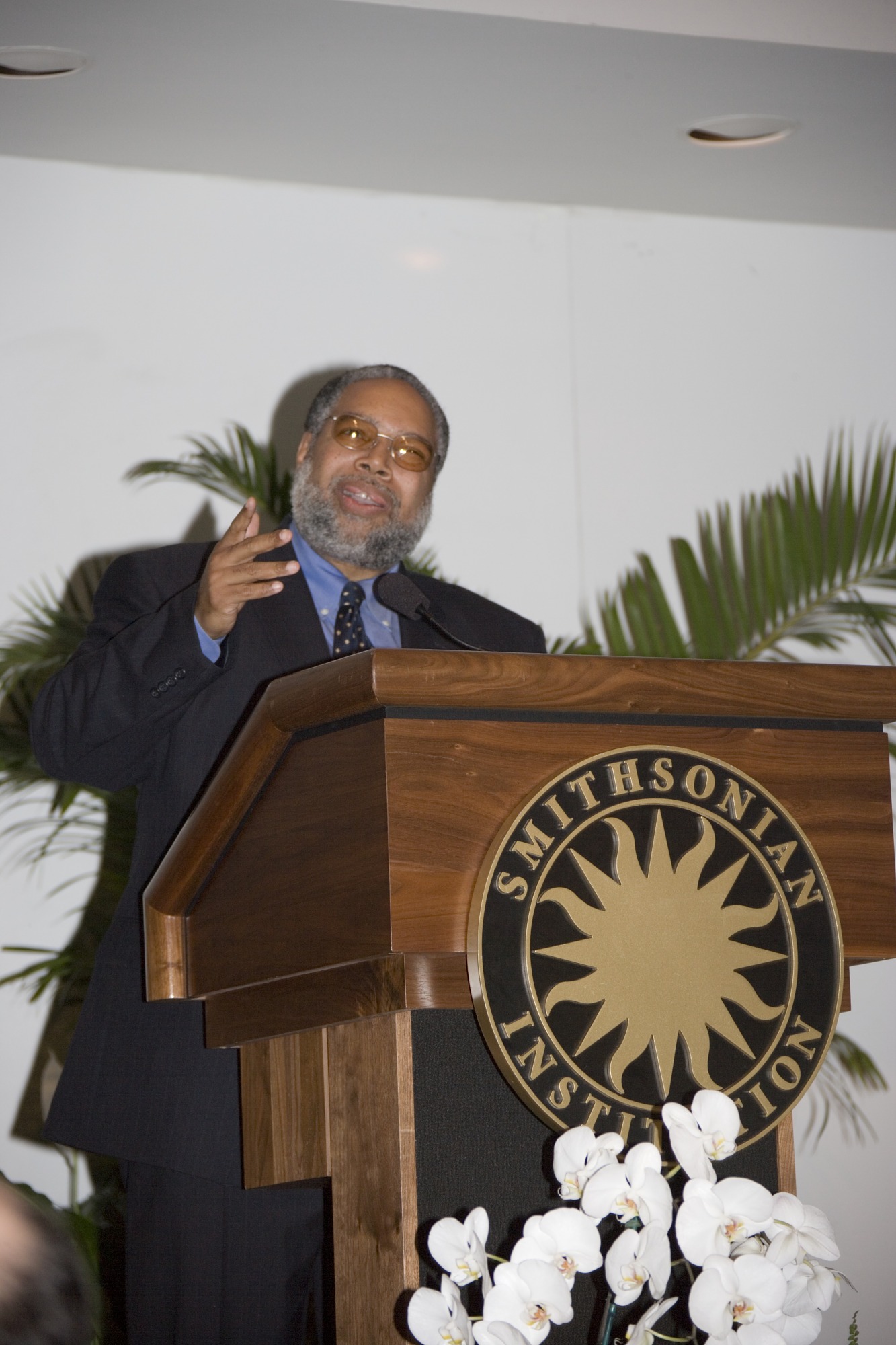
60
Mar 14, 2020 Smithsonian Closes due to Corona Virus Pandemic
As a public health precaution due to COVID-19 (coronavirus), all Smithsonian museums in the Washington, D.C., metropolitan area, and in New York City, including the National Zoo, temporarily closed to the public starting Saturday, March 14, 2020. All public programs were canceled through the summer. All Smithsonian facilities around the globe, including Panama, Hawaii, Arizona, New York, etc., were also closed, with only the most essential employees onsite, to protect buildings, collections, animals, equipment, and other resources. All non-essential employees who could telework were placed in telework status; those who could not telework were placed on emergency leave. All academic appointments, such as interns and fellows, were postponed. All travel was canceled. The health and safety of Smithsonian visitors, staff, and volunteers was a top priority. Smithsonian administrators, led by Secretary Lonnie G. Bunch III, closely monitored the coronavirus situation and maintained ongoing communication with local health officials, the Centers for Disease Control and Prevention, the staff, and the public.

